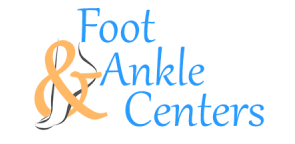Laser Treatment for Toenail Fungus
How Does Laser Treatment For Toenail Fungus Work?
Laser devices produce pulses of energy that cause heat. When directed at the toenail fungus (onychomycosis), the laser is optimized to penetrate through the toenail to the fungus in the nail bed.
Most lasers used are CO2 lasers or yttrium-aluminum-garnet (YAG) lasers. Their wavelengths are ideal for increasing the localized temperature. For example, the tissue is gasified and decomposed under the nail, destroying any fungus in the surrounding tissue.
In addition, the laser sterilizes the area, preventing new fungal growth.
Because laser toenail fungus treatment can potentially damage your tissue, low energies are employed for safety. As a result, multiple treatments are typically needed to eliminate all the fungal growth.
Is It Effective?
Yes. According to the US Department of Health and Human Services, several FDA-approved laser devices produce a "temporary increase in clear nails in patients with onychomycosis".
In fact, laser treatment was shown to be effective in multiple clinical trials.
In a 2019 study, 61% of onychomycosis patients reported a 61% cure rate at 16 weeks, while another study saw 91% clinical improvement and a 30% cure rate at 180 days.
Overall, laser therapy is associated with a high rate of negative cultures — meaning fungus typically doesn't grow after laser treatment.
Laser Treatment for Toenail Fungus or Antifungal Medication: What's Better?
Most cases of onychomycosis are treated with topical or oral antifungals. Topical antifungals include creams, ointments, and even nail varnishes designed to prevent or treat fungal infections. By comparison, oral antifungals are much stronger and can cause systemic side effects, whereas topical antifungals are very safe.
According to the evidence, around 45% of cases improve with topical medicine and between 40% to 66% with oral medication.
However, as side effects of antifungal medications include elevated liver enzymes, liver failure, headaches, stomach discomfort, loss of taste, and lupus-like symptoms, many patients aren't keen on the treatment.
Indeed, oral medication may need a four-month course, and topical antifungals can take a year to demonstrate results. In contrast, laser toenail fungus treatment works swiftly and efficiently.
What You Should Expect
This treatment is a simple, pain-free procedure. During the session, your foot doctor will inspect your foot. A debridement, where your toenails are clipped and dead skin clean, may occur prior to the procedure.
The laser therapist — usually an experienced podiatrist — will clean the foot with a sterile solution. The laser will be maneuvered over the affected nails, using pulses to minimize heat on the skin. In total, a session of laser treatment for toenail fungus typically lasts 30 minutes or less, and 1-3 sessions are needed for lasting results.
Look for these signs of improvement:
Reduce yellow, white, or brown toenail discoloration
No more flaky debris under or on the nail.
No more detachment of the nail from the nail bed.
Normal shape and texture of new nail growth (no thickness, bumps, or altered shape).



